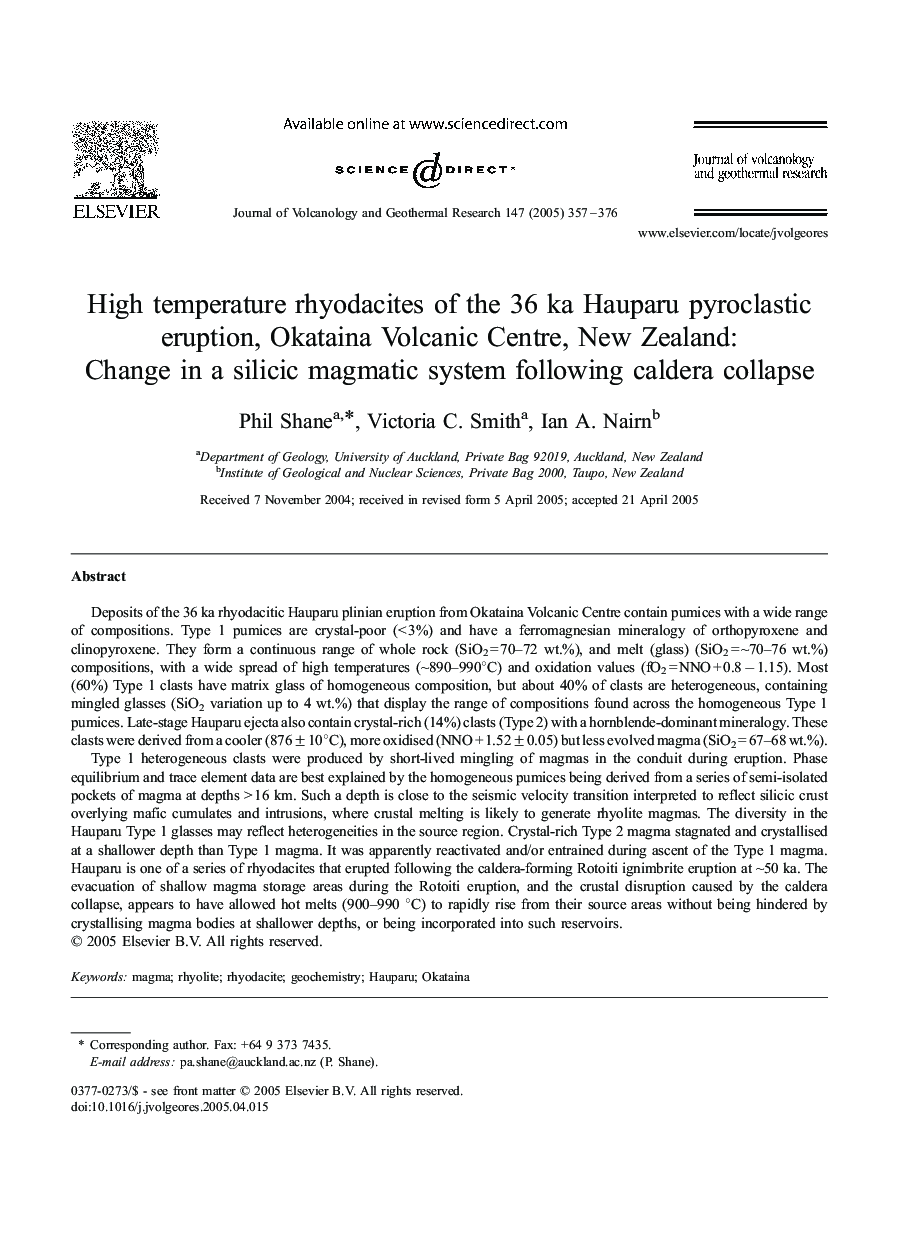| کد مقاله | کد نشریه | سال انتشار | مقاله انگلیسی | نسخه تمام متن |
|---|---|---|---|---|
| 9531068 | 1638490 | 2005 | 20 صفحه PDF | دانلود رایگان |
عنوان انگلیسی مقاله ISI
High temperature rhyodacites of the 36 ka Hauparu pyroclastic eruption, Okataina Volcanic Centre, New Zealand: Change in a silicic magmatic system following caldera collapse
دانلود مقاله + سفارش ترجمه
دانلود مقاله ISI انگلیسی
رایگان برای ایرانیان
موضوعات مرتبط
مهندسی و علوم پایه
علوم زمین و سیارات
ژئوشیمی و پترولوژی
پیش نمایش صفحه اول مقاله

چکیده انگلیسی
Type 1 heterogeneous clasts were produced by short-lived mingling of magmas in the conduit during eruption. Phase equilibrium and trace element data are best explained by the homogeneous pumices being derived from a series of semi-isolated pockets of magma at depths > 16 km. Such a depth is close to the seismic velocity transition interpreted to reflect silicic crust overlying mafic cumulates and intrusions, where crustal melting is likely to generate rhyolite magmas. The diversity in the Hauparu Type 1 glasses may reflect heterogeneities in the source region. Crystal-rich Type 2 magma stagnated and crystallised at a shallower depth than Type 1 magma. It was apparently reactivated and/or entrained during ascent of the Type 1 magma. Hauparu is one of a series of rhyodacites that erupted following the caldera-forming Rotoiti ignimbrite eruption at â¼50 ka. The evacuation of shallow magma storage areas during the Rotoiti eruption, and the crustal disruption caused by the caldera collapse, appears to have allowed hot melts (900-990 °C) to rapidly rise from their source areas without being hindered by crystallising magma bodies at shallower depths, or being incorporated into such reservoirs.
ناشر
Database: Elsevier - ScienceDirect (ساینس دایرکت)
Journal: Journal of Volcanology and Geothermal Research - Volume 147, Issues 3â4, 15 October 2005, Pages 357-376
Journal: Journal of Volcanology and Geothermal Research - Volume 147, Issues 3â4, 15 October 2005, Pages 357-376
نویسندگان
Phil Shane, Victoria C. Smith, Ian A. Nairn,